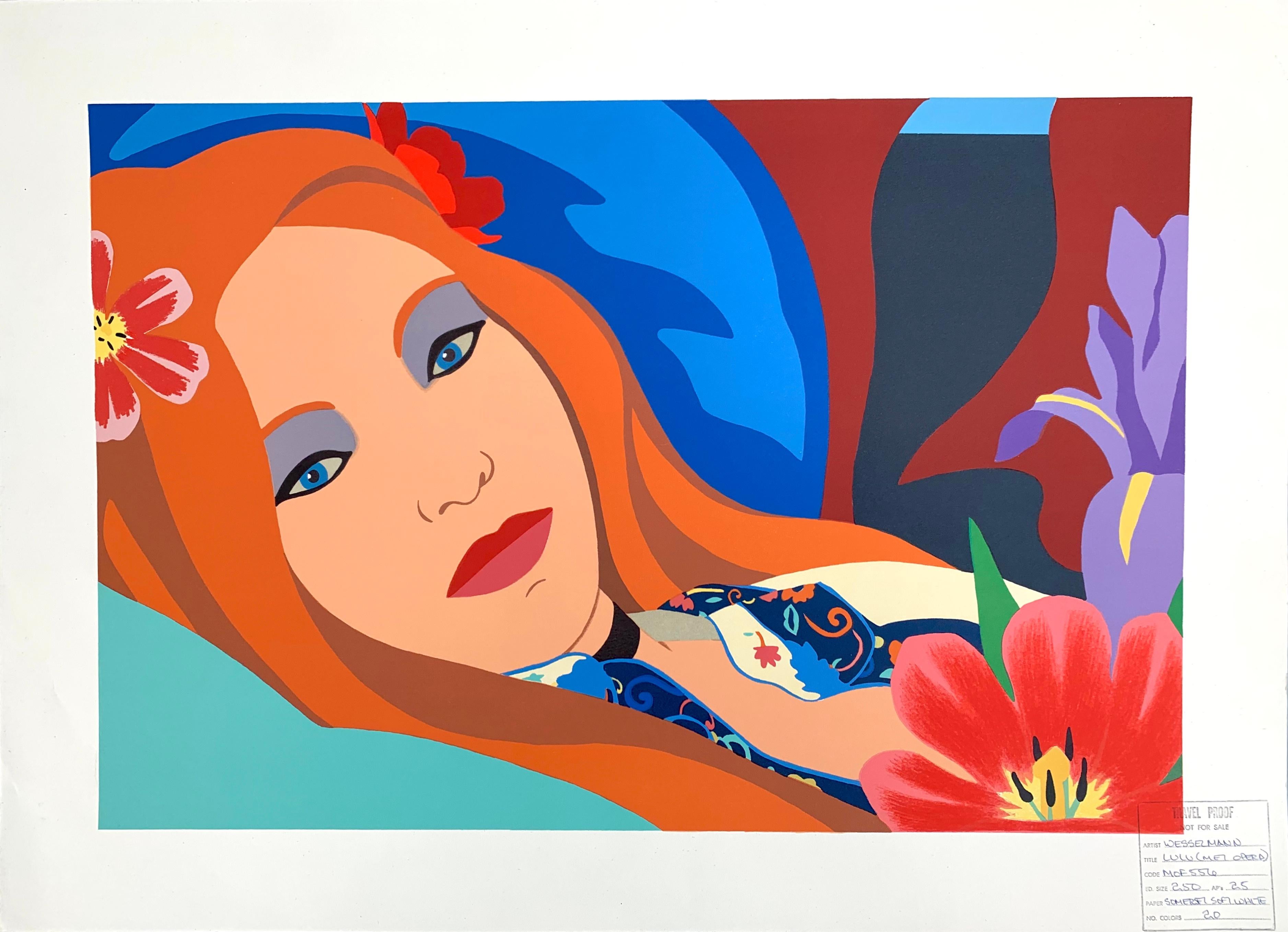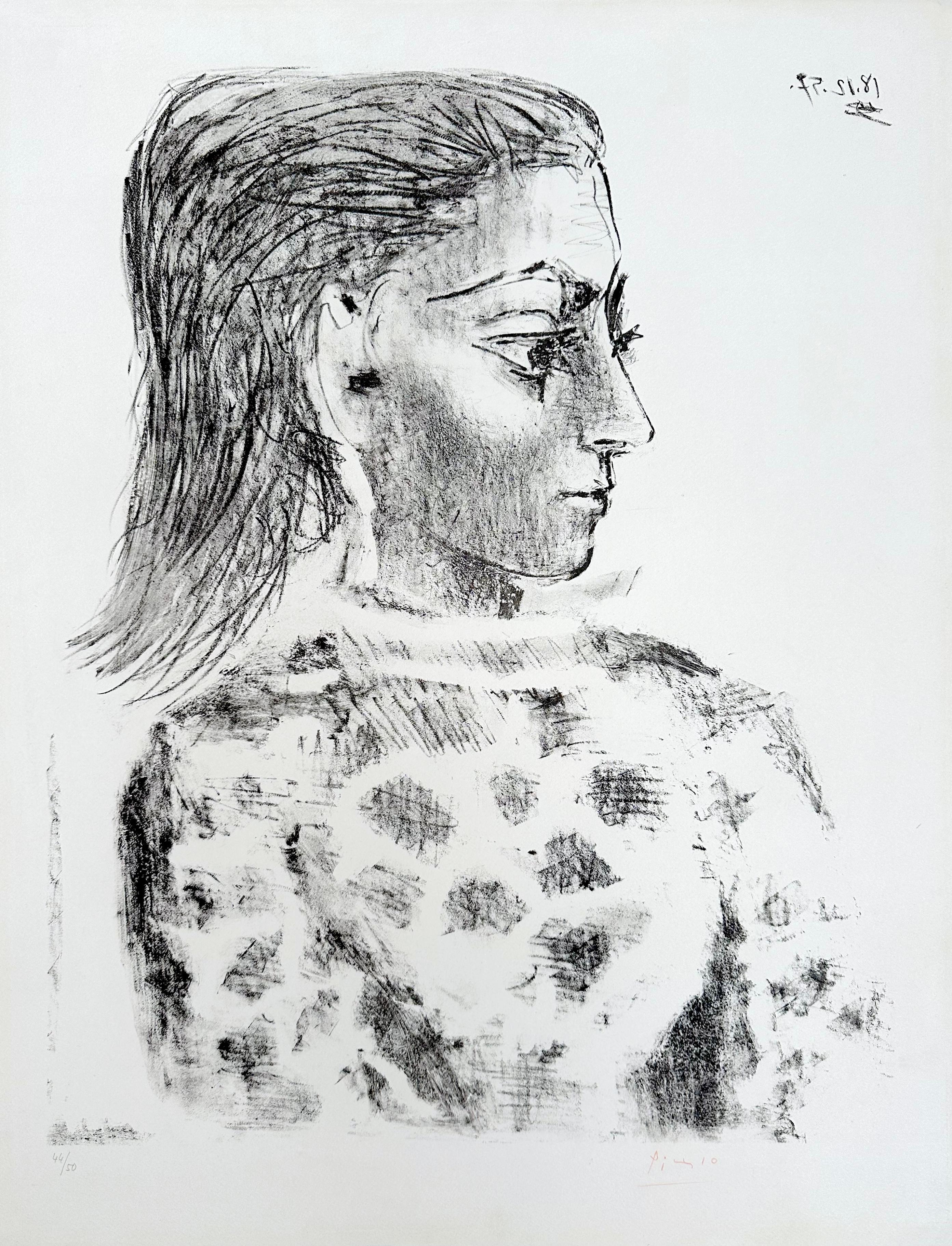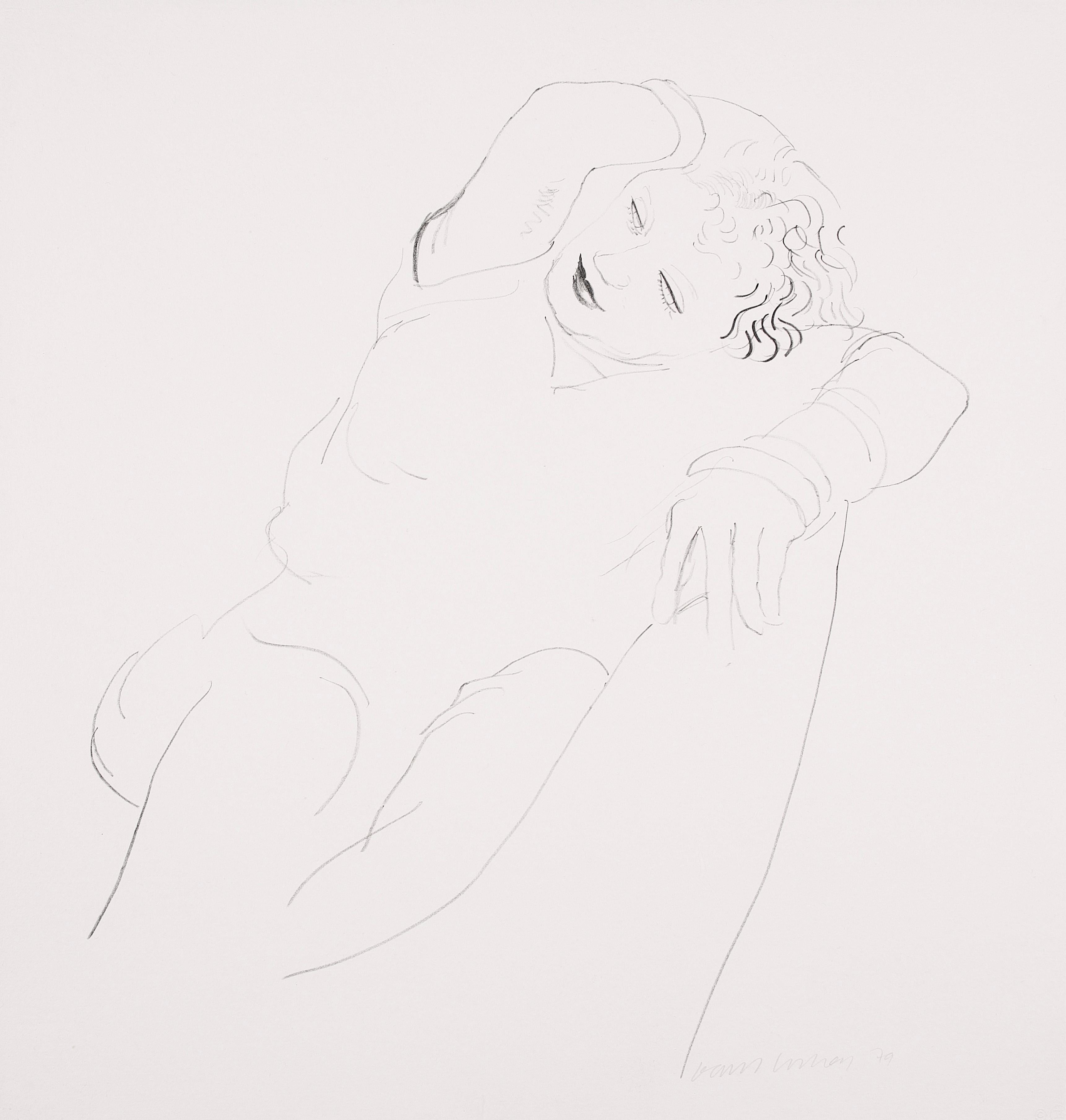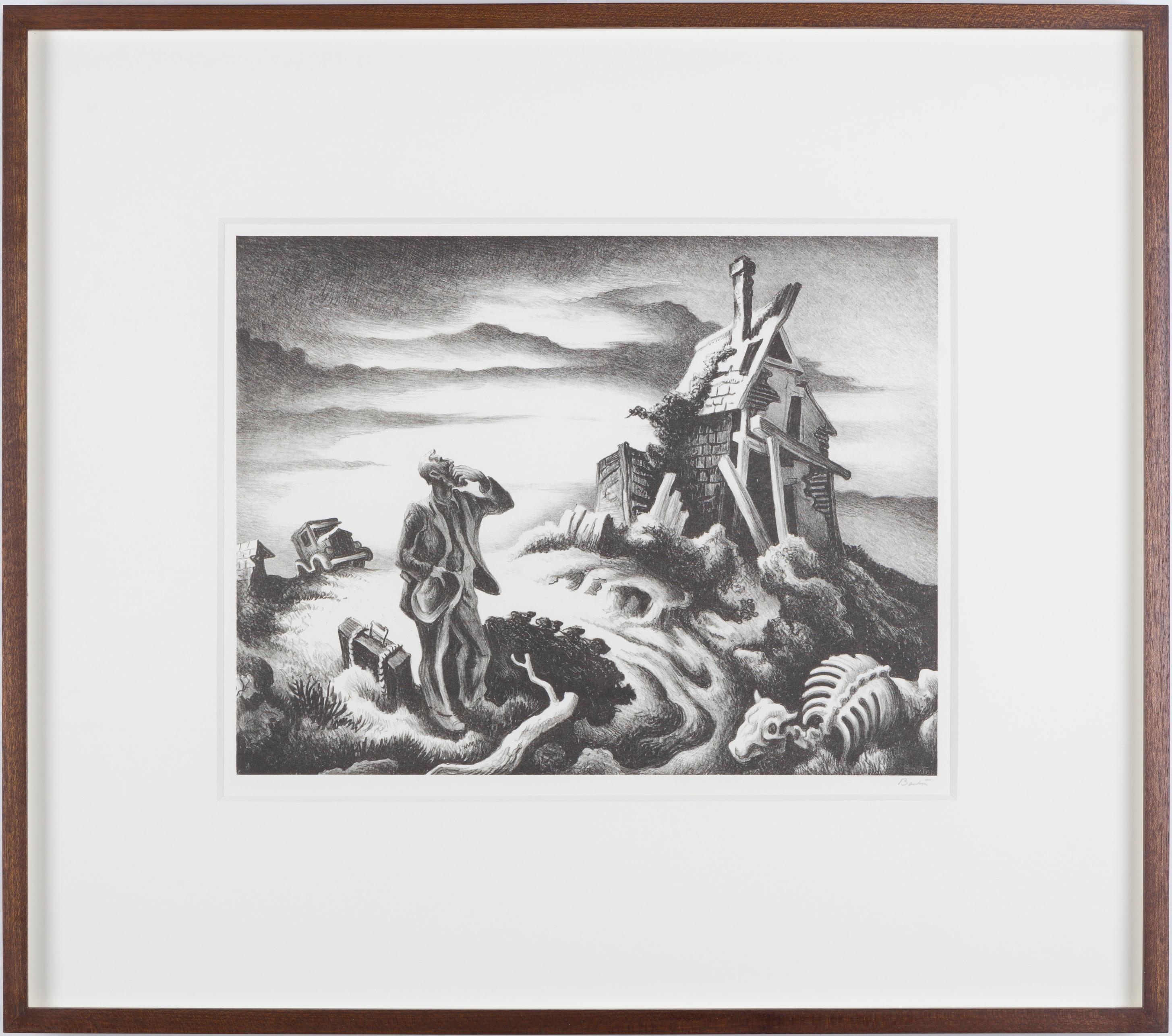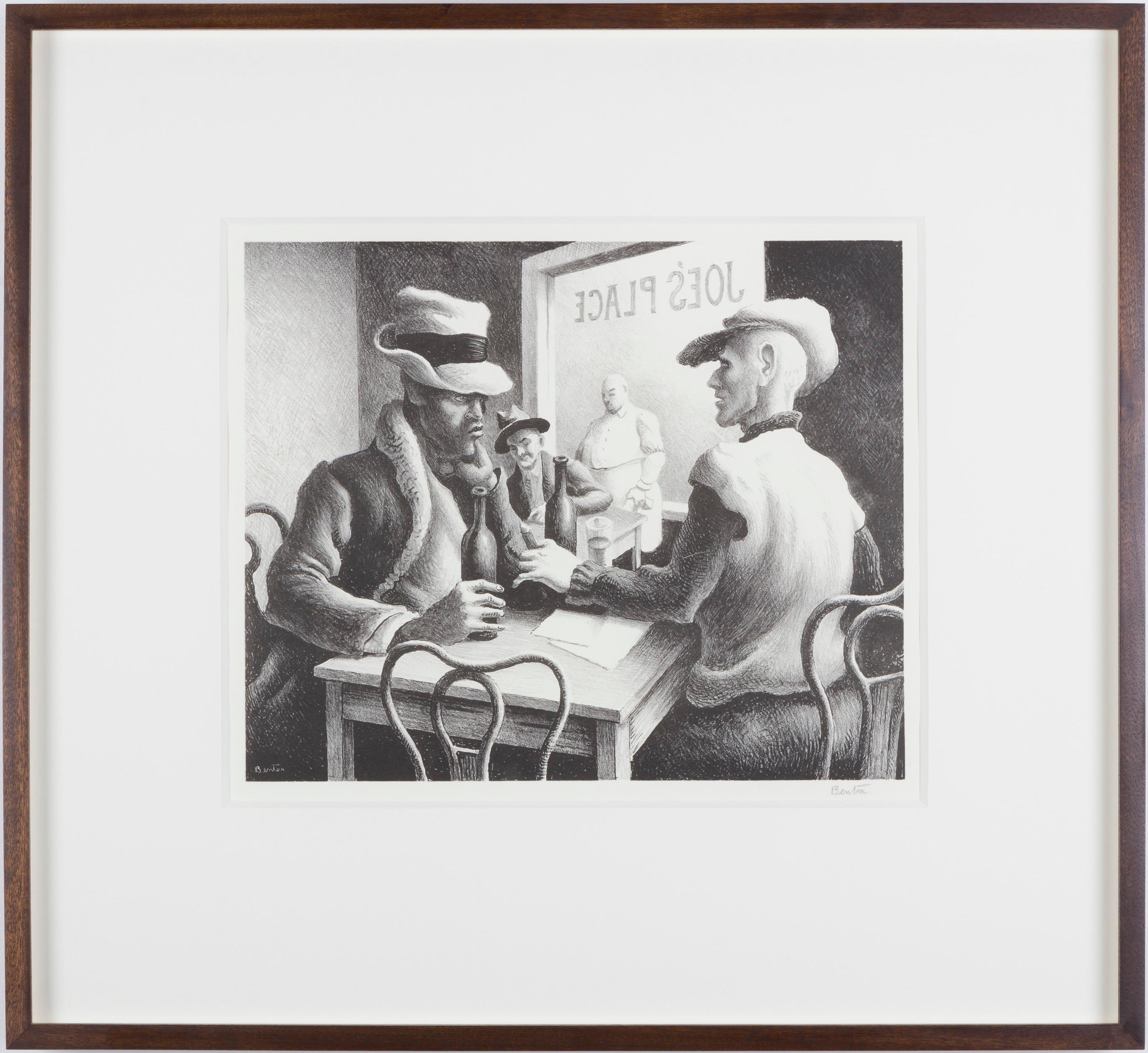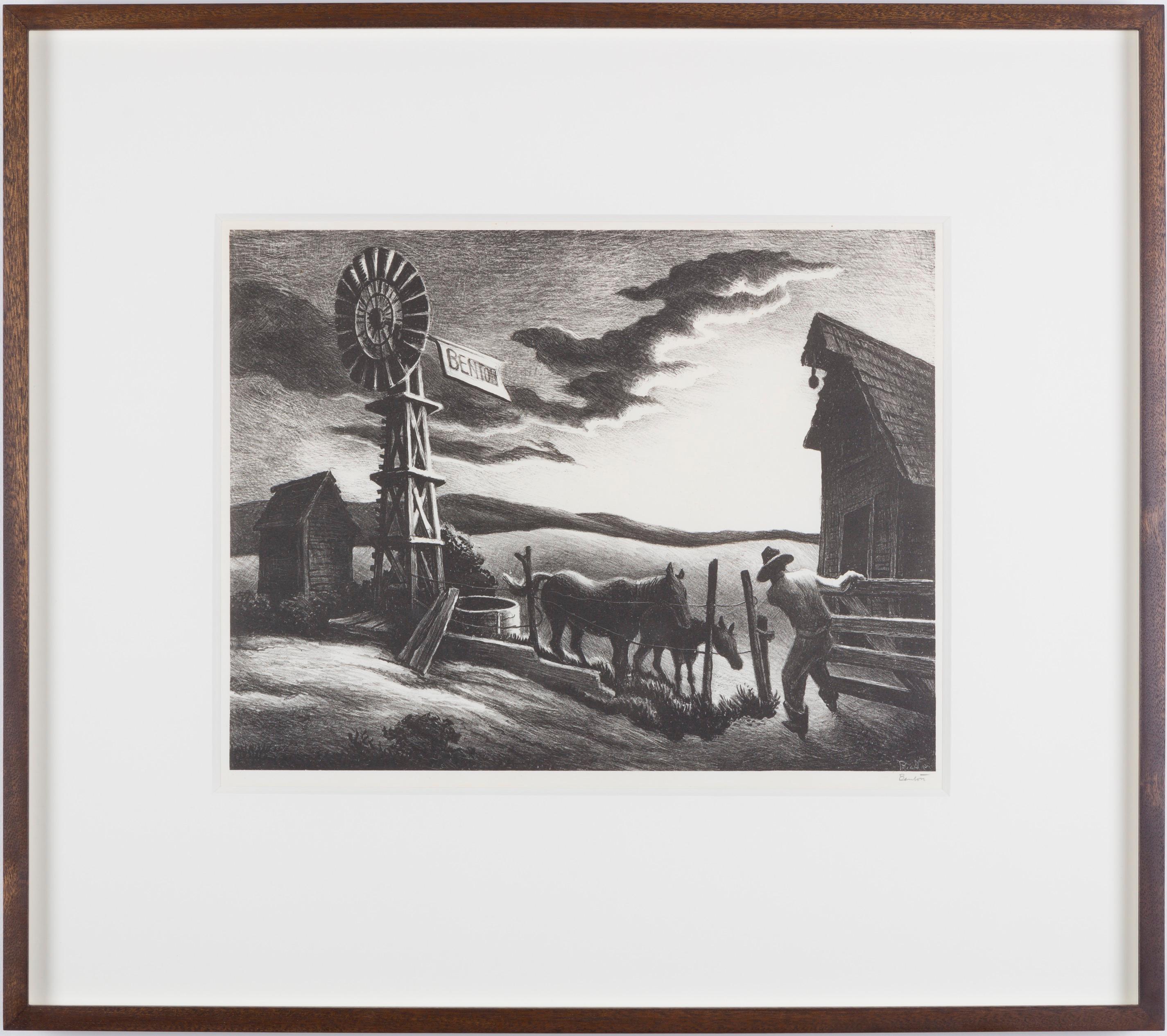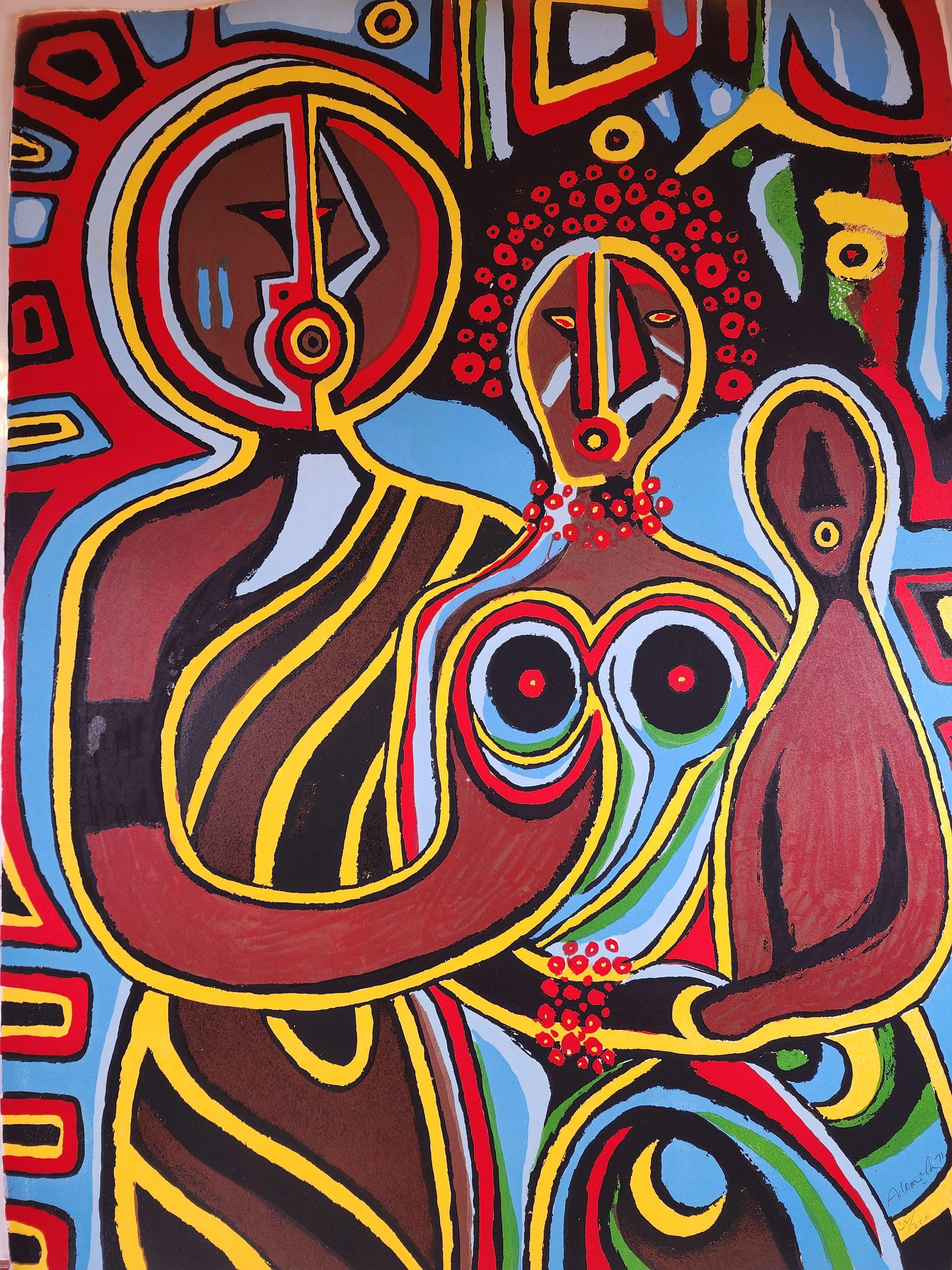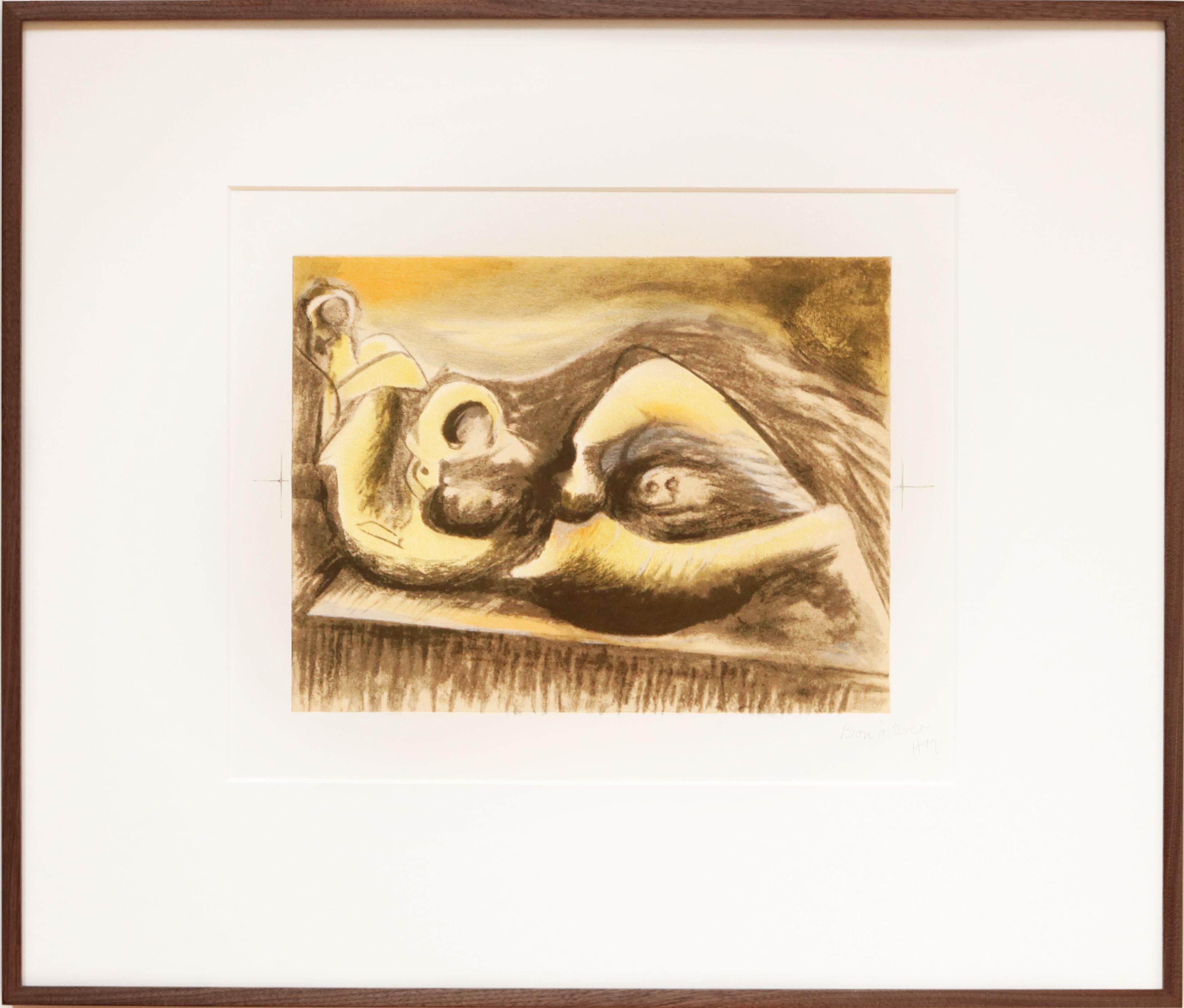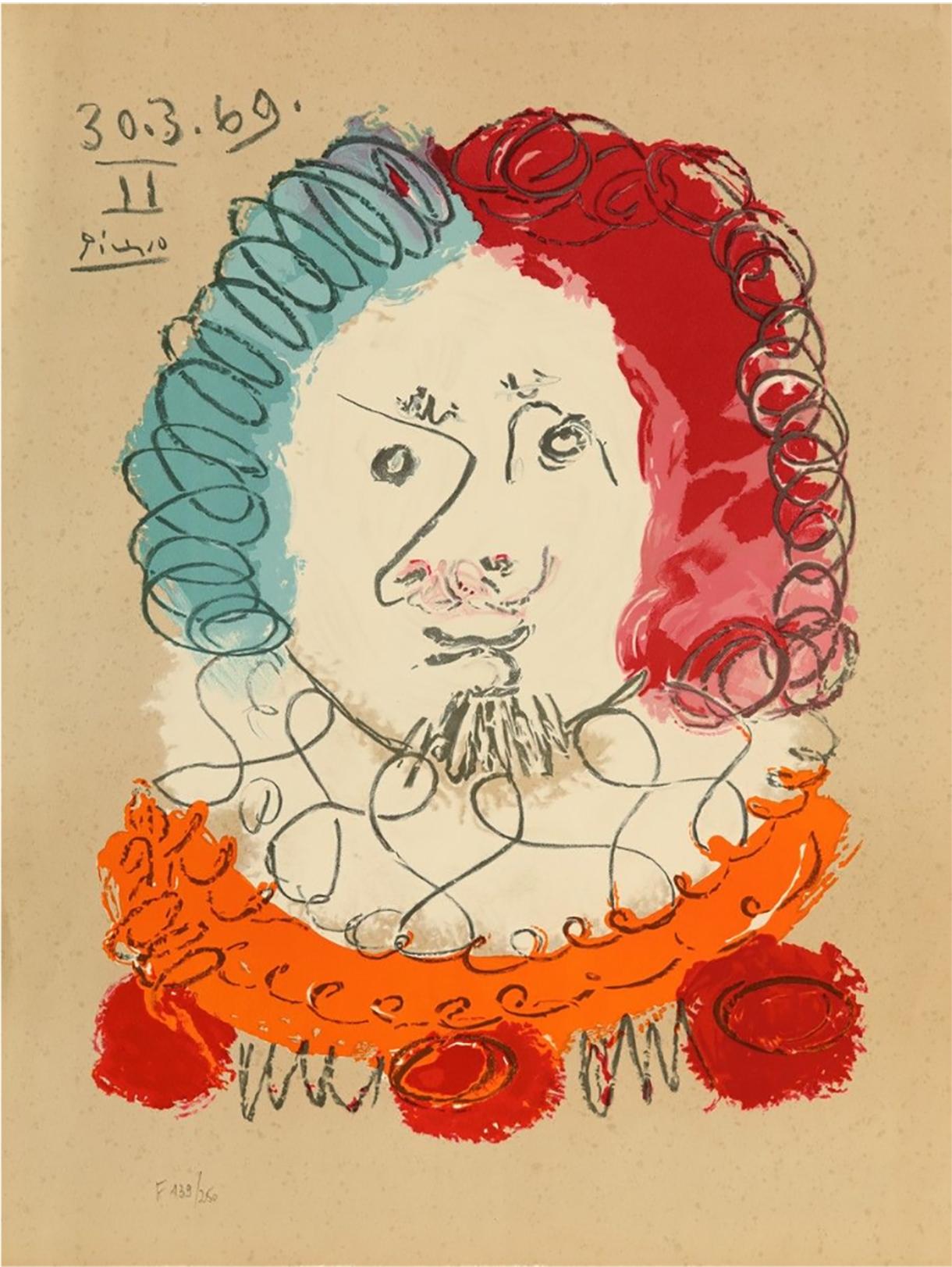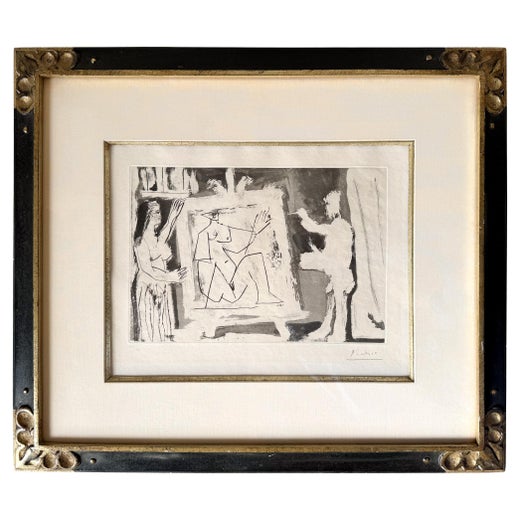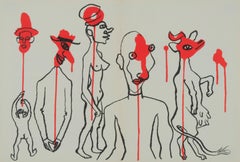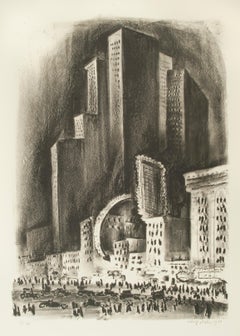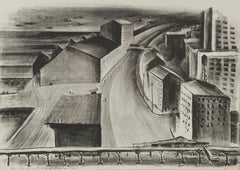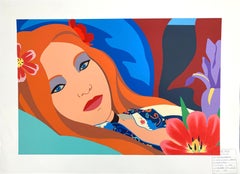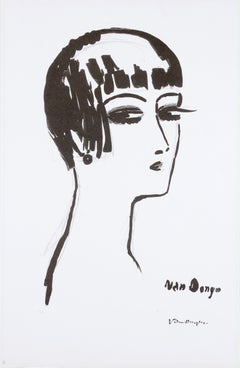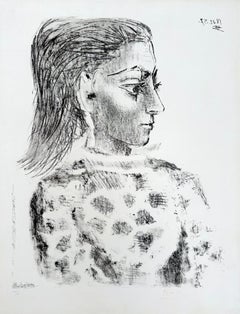
La Petite Corrida (The Little Bullfight)
View Similar Items
Pablo PicassoLa Petite Corrida (The Little Bullfight)1957
1957
About the Item
- Creator:Pablo Picasso (1881-1973, Spanish)
- Creation Year:1957
- Dimensions:Height: 12.25 in (31.12 cm)Width: 9.44 in (23.98 cm)
- Medium:
- Movement & Style:
- Period:
- Condition:
- Gallery Location:Fairlawn, OH
- Reference Number:Seller: FA119631stDibs: LU1408330102
Pablo Picasso
One of the most prolific and revolutionary artists the world has ever seen, Pablo Picasso had a tremendous impact on the development of 20th-century modern art. Although he is best known for his association with the Cubist movement, which he founded with Georges Braque, Picasso’s influence extends to Surrealism, neoclassicism and Expressionism.
“Every act of creation is, first of all, an act of destruction,” the Spanish artist proclaimed. In Picasso's Cubist paintings, he emphasizes the two-dimensionality of the canvas, breaking with conventions regarding perspective, foreshortening and proportion. Picasso was inspired by Iberian and African tribal art. One of his most famous pre-Cubist works is Les Demoiselles d’Avignon (1907), a painting considered immoral and shocking at the time for its depiction of nude women whose faces resemble Iberian tribal masks.
Picasso made many portraits in this style, most often of the women in his life, their expressively colored faces composed of geometric shards of surface planes. In Woman in a Hat (Olga), 1935, he painted his first wife as an assemblage of abstract forms, leaving the viewer to decipher the subject through the contrasting colors and shapes. Picasso was a tireless artist, creating more than 20,000 paintings, drawings, prints, ceramics and sculptures. Tracing his life’s work reveals the progression of modern art, on which he had an unparalleled influence.
Browse an expansive collection of Pablo Picasso's art on 1stDibs.
- UntitledBy Alexander CalderLocated in Fairlawn, OHUntitled Color lithograph, 1966 Unsigned as issued From:Derriere le Miroir, Volume 156 Large unsigned edition Printed by Mourlot, Paris Published by Aime Maeght, Paris Condition: Usu...Category
1960s American Modern Abstract Prints
MaterialsLithograph
- New York NightBy Adolf DehnLocated in Fairlawn, OHNew York Night\Lithograph, 1930 Edition: 30 Printer: Meister Schulz, Berlin Printed on heavy wove paper without watermark This lithograph was created in...Category
1930s American Modern Landscape Prints
MaterialsLithograph
- Brooklyn WaterfrontBy Adolf Arthur DehnLocated in Fairlawn, OHBrooklyn Waterfront Lithograph, 1931 Signed, titled, and dated in pencil by the artist Edition: Undetermined (very small), plus artist's proofs Printed by Meister Schulz, Berlin Provenance: Estate of the artist Virginia Dehn, the artist's widow Dehn Quests Bibliography: Lumsdaine and O'Sullivan 152 Illustrated: Adams, The Sensuous Life of Adolf Dehn, Fig. 9.14, page 213 (This impression) Adolf Dehn, American Watercolorist and Printmaker, 1895-1968 Adolf Dehn was an artist who achieved extraordinary artistic heights, but in a very particular artistic sphere—not so much in oil painting as in watercolor and lithography. Long recognized as a master by serious print collectors, he is gradually gaining recognition as a notable and influential figure in the overall history of American art. In the 19th century, with the invention of the rotary press, which made possible enormous print runs, and the development of the popular, mass-market magazines, newspaper and magazine illustration developed into an artistic realm of its own, often surprisingly divorced from the world of museums and art exhibitions, and today remains surprisingly overlooked by most art historians. Dehn in many regards was an outgrowth of this world, although in an unusual way, since as a young man he produced most of his illustrative work not for popular magazines, such as The Saturday Evening Post, but rather for radical journals, such as The Masses or The Liberator, or artistic “little magazines” such as The Dial. This background established the foundation of his outlook, and led later to his unique and distinctive contribution to American graphic art. If there’s a distinctive quality to his work, it was his skill in introducing unusual tonal and textural effects into his work, particularly in printmaking but also in watercolor. Jackson Pollock seems to have been one of many notable artists who were influenced by his techniques. Early Years, 1895-1922 For an artist largely remembered for scenes of Vienna and Paris, Adolf Dehn’s background was a surprising one. Born in Waterville, Minnesota, on November 22, 1895, Dehn was the descendent of farmers who had emigrated from Germany and homesteaded in the region, initially in a one-room log cabin with a dirt floor. Adolf’s father, Arthur Clark Dehn, was a hunter and trapper who took pride that he had no boss but himself, and who had little use for art. Indeed, during Adolf’s boyhood the walls of his bedroom and the space under his bed were filled with the pelts of mink, muskrats and skunks that his father had killed, skinned and stretched on drying boards. It was Adolf’s mother, Emilie Haas Dehn, a faithful member of the German Lutheran Evangelical Church, who encouraged his interest in art, which became apparent early in childhood. Both parents were ardent socialists, and supporters of Eugene Debs. In many ways Dehn’s later artistic achievement was clearly a reaction against the grinding rural poverty of his childhood. After graduating from high school in 1914 at the age of 19—an age not unusual in farming communities at the time, where school attendance was often irregular—Dehn attended the Minneapolis School of Art from 1914 to 1917, whose character followed strongly reflected that of its director, Munich-trained Robert Kohler, an artistic conservative but a social radical. There Dehn joined a group of students who went on to nationally significant careers, including Wanda Gag (later author of best-selling children’s books); John Flanagan (a sculptor notable for his use of direct carving) Harry Gottlieb (a notable social realist and member of the Woodstock Art Colony), Elizabeth Olds (a printmaker and administrator for the WPA), Arnold Blanch (landscape, still-life and figure painter, and member of the Woodstock group), Lucille Lunquist, later Lucille Blanch (also a gifted painter and founder of the Woodstock art colony), and Johan Egilrud (who stayed in Minneapolis and became a journalist and poet). Adolf became particularly close to Wanda Gag (1893-1946), with whom he established an intense but platonic relationship. Two years older than he, Gag was the daughter of a Bohemian artist and decorator, Anton Gag, who had died in 1908. After her husband died, Wanda’s mother, Lizzi Gag, became a helpless invalid, so Wanda was entrusted with the task of raising and financially supporting her six younger siblings. This endowed her with toughness and an independent streak, but nonetheless, when she met Dehn, Wanda was Victorian and conventional in her artistic taste and social values. Dehn was more socially radical, and introduced her to radical ideas about politics and free love, as well as to socialist publications such as The Masses and The Appeal to Reason. Never very interested in oil painting, in Minneapolis Dehn focused on caricature and illustration--often of a humorous or politically radical character. In 1917 both Dehn and Wanda won scholarships to attend the Art Students League, and consequently, in the fall of that year both moved to New York. Dehn’s art education, however, ended in the summer of 1918, shortly after the United States entered World War I, when he was drafted to serve in the U. S. Army. Unwilling to fight, he applied for status as a conscientious objector, but was first imprisoned, then segregated in semi-imprisonment with other Pacifists, until the war ended. The abuse he suffered at this time may well explain his later withdrawal from taking political stands or making art of an overtly political nature. After his release from the army, Dehn returned to New York where he fell under the spell of the radical cartoonist Boardman Robinson and produced his first lithographs. He also finally consummated his sexual relationship with Wanda Gag. The Years in Europe: 1922-1929 In September of 1921, however, he abruptly departed for Europe, arriving in Paris and then moving on to Vienna. There in the winter of 1922 he fell in love with a Russian dancer, Mura Zipperovitch, ending his seven-year relationship with Wanda Gag. He and Mura were married in 1926. It was also in Vienna that he produced his first notable artistic work. Influenced by European artists such as Jules Pascin and Georg Grosz, Dehn began producing drawings of people in cafes, streets, and parks, which while mostly executed in his studio, were based on spontaneous life studies and have an expressive, sometimes almost childishly wandering quality of line. The mixture of sophistication and naiveté in these drawings was new to American audiences, as was the raciness of their subject matter, which often featured pleasure-seekers, prostitutes or scenes of sexual dalliance, presented with a strong element of caricature. Some of these drawings contain an element of social criticism, reminiscent of that found in the work of George Grosz, although Dehn’s work tended to focus on humorous commentary rather than savagely attacking his subjects or making a partisan political statement. Many Americans, including some who had originally been supporters of Dehn such as Boardman Robinson, were shocked by these European drawings, although George Grocz (who became a friend of the artist in this period) admired them, and recognized that Dehn could also bring a new vision to America subject matter. As he told Dehn: “You will do things in America which haven’t been done, which need to be done, which only you can do—as far at least as I know America.” A key factor in Dehn’s artistic evolution at this time was his association with Scofield Thayer, the publisher of the most notable modernist art and poetry magazine...Category
1920s American Modern Landscape Prints
MaterialsLithograph
- Niagara FallsBy Adolf Arthur DehnLocated in Fairlawn, OHNiagara Falls Lithograph, 1931 Signed lower right (see photo) Titled/edition lower left. (see photo) Edition of 25 Provenance: the Estate of the Artist Condition: Excellent Image si...Category
1930s American Modern Landscape Prints
MaterialsLithograph
- Mayan TrioBy Francisco DosamantesLocated in Fairlawn, OHMayan Trio Lithograph, 1950 Signed in pencil lower right (see photo) Edition 250 for Associated American Artists Publsihed 1950 Reference: AAA Cat.: 1950‑05; 1958‑01 AAA Index 1087 Condition: Excellent Image size: 13 x 9 1/2 inches Francisco Dosamantes (b. October 4, 1911 - d. July 18.1986) was a Mexican artist and educator who is best known for is educational illustrations and graphic work against fascism. He was a founding member of the Taller de Gráfica Popular and the Salón de la Plástica Mexicana. Life Francisco Dosamantes was born in Mexico City on October 4, 1911. His father was Daniel Dosamantes who was a builder, interior decorator and painter. He was not registered into the civil registry until he was about twenty years old on March 6, 1939. His mother’s name is not listed on the certificate. As a child, he demonstrated a strong interest in drawing and color, influenced by his father and his uncle Juan. The Mexican Revolution occurred while he was a young child and he stated that he remembered events such as soldiers on horses charging as well as the execution of rural farm workers. He attended primary and high school in Mexico City but stated that his education was irregular and deficient. He then entered the Escuela Nacional de Artes Plásticas, where he studied for five years. Initially, however, he was disappointed with the inexperience of the young professors and he left for a short time to study on his own. During this time, some of the dissatisfied professors organized the 30 30 group against the academic system of the school and which whom he sympathized. The effort gained the attention of established artists such as Diego Rivera who intervened. He died on Mexico City on July 18, 1986 Career After he graduated, he worked with the cultural missions of the Secretaría de Educación Pública in Oaxaca, Michoacán, Guerrero, Colima, Coahuila and Chihuahua (state) from 1932 to 1937 then again from 1941 to 1945. He stated that this experience was vital to his conscience as he worked with rural farm workers and others he stated were worthy of dignity and respect, but victims of deceit and exploitation. When he returned to Mexico City, he gave classes in high schools from 1937 to 1941. In 1945 he founded and directed the Taller Escuela de Dibujo y Pintura “Joaquín Claussell” in Campeche, Campeche. Dosamantes was a politically and culturally active artist with most of his work and affiliations related to such. He was a member of the Liga de Escritores y Artistas Revolucionarios from 1934 to 1938. He was a founding member of the Taller de Gráfica Popular, serving as administrator in 1940 and remaining a member until his death except for one short hiatus. He created posters for conferences about fascism and Nazism such as Alemania bajo bayonetas (Germany under bayonets) in 1938. In 1940 he became the secretary general of the Sindicato de Maestros de Artes Plásticas. He was also a member of the Sociedad para el Impulso de las Artes Plásticas en 1948, a founding member of the Salón de la Plástica Mexicana in 1949 and a member of the Frente Nacional de Artes Plásticas from 1952. He painted a number of murals in rural areas of Mexico generally when he was there on cultural missions. His main mural is at the former home of José María Morelos in Carácuaro, Michoacán, but there are a number at various rural schools. These were all painted between 1941 and 1946. As a book illustrator he mostly worked for the Secretaría de Educación Pública working on books for literacy campaigns. He exhibited his works, which included engravings, oils, tempuras and lithographs in Mexico and abroad. His first individual exhibition was in 1930 at the Galeria de Arte Moderno in Mexico City. His major exhibitions include the Excelsior Gallery in Mexico City in 1932, various exhibitions in New York, Washington, Philadelphia and Los Angeles in 1937; the Nelson Gallery of Art in Kansas City, Missouri in late 1947, and the Gallery of Mexican Art in...Category
1950s American Modern Figurative Prints
MaterialsLithograph
- Five Ideas for SculptureBy Henry MooreLocated in Fairlawn, OHFive Ideas for Sculpture Lithograph, 1981 Signed and numbered in pencil by the artist lower margin. (see photos) Edition: (35/50) 50 There were also 15 Roman Numeral artist's proofs....Category
1950s Modern Abstract Prints
MaterialsLithograph
- LuluBy Tom WesselmannLocated in ZEIST, UTTom Wesselmann- Lulu Lithograph on somerset paper, 1982 A unsigned and undated ‘Travel proof’ (for presentation) apart from the signed and numbered edition of 250 & 25 AP’s. Stamped...Category
1980s Modern Portrait Prints
MaterialsLithograph
- Les Cheveux Courts, 1st StateBy Kees van DongenLocated in ZEIST, UTKees van Dongen - Les Cheveux Courts, 1th state, 1924 Edition of only 30 copies on Arches paper. Signed in the stone and with the artist signature stamp. Numbered 23/30 in pencil. Pu...Category
1920s Modern Portrait Prints
MaterialsLithograph
- Buste au corsage à carreauxBy Pablo PicassoLocated in ZEIST, UTPablo Picasso - Buste au corsage à carreaux Lithograph on Arches paper (with Arches watermark), 1957 Executed in 1957; Mourlot's first state (of two), printed by Mourlot, Paris. Publ...Category
1950s Modern Portrait Prints
MaterialsLithograph
Price Upon Request - Celia RecliningBy David HockneyLocated in ZEIST, UTDavid Hockney- Celia Reclining Lithograph, 1979 Signed and dated in pencil. Un unnumbered copy apart from the numbered edition of 100 (& 24 Artist proofs). Inscribed in pencil to ver...Category
1970s Modern Portrait Prints
MaterialsLithograph
- DiscussionBy Thomas Hart BentonLocated in London, GBA fine impression with large full margins published by Associated American Artists.Category
1930s American Modern Figurative Prints
MaterialsLithograph
- Prodigal SonBy Thomas Hart BentonLocated in London, GBA fine impression with full margins published by Associated American Artists with their information label present - pictured in Art and Popular Religion in Evangelical America, 1815-...Category
1930s American Modern Landscape Prints
MaterialsLithograph
Recently Viewed
View AllRead More
Science Uncovers Hidden Truths behind Young Pablo Picasso’s Blue Period
From 1901 to 1904, Picasso limited his palette to bluish hues in producing some of his most famous early works. A new show looks at the recycled materials, hidden underpaintings, surprising influences and bohemian lifestyle that led to their creation.
Who Are the Most Popular Artists on 1stdibs?
Learn the stories of some of the world's most recognizable artworks and their makers.
